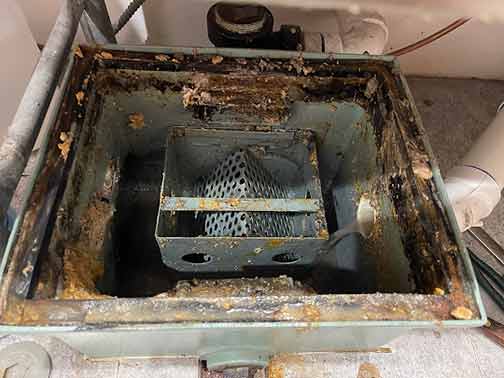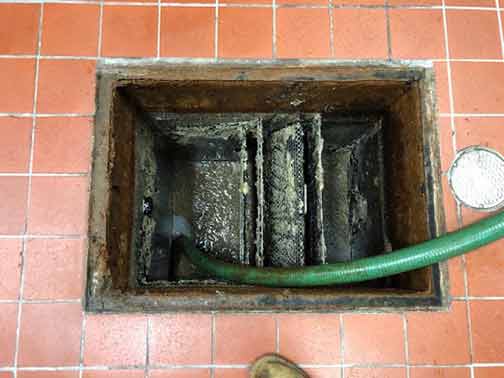
If you own a restaurant, work in one, or have one in your commercial building, you may have heard of grease traps. The purpose of a grease trap is to separate fats, oils, and grease (FOGs) from the wastewater exiting a building. Grease traps, also known as grease interceptors, are commonly found in commercial kitchens, restaurants, or public facilities where food is prepared.
Grease traps are installed to keep FOGs or other harmful substances in wastewater from getting into the public sewer system. The reason for this is when FOGs are allowed into the main sewers they congeal, harden, and begin to clog sewer pipes. The result of that is the backflow of sewer waste into homes and commercial buildings, explains Nest Finders Management.
Grease traps prevent this by intercepting and separating FOGs before the wastewater is allowed into the city sewers. Grease traps are attached to the plumbing, at a point in the system where they can easily capture wastewater coming from the kitchen or restaurant. Grease traps and grease interceptors have the same function, but there are a few differences between the two.
Grease interceptors are usually larger, mostly made from cement and built into the ground (in-ground). Grease traps, on the other hand, are above-ground, made of steel, and have a smaller capacity.
How do grease traps work, what are the components of a grease trap and how do you maintain a grease trap? This post will answer those questions.
Features and functions of a grease trap
In addition to steel, grease traps come in a range of materials and various sizes for making them. The configuration of the grease trap will vary depending on the manufacturer. But almost all grease traps have the same basic components and function in the exact same manner.
Below are the parts you should expect to see in your restaurant grease trap.
- Flow control valve – This is a T-shaped pipe installed in front of the inlet valve. It controls the amount of water coming into the trap. It keeps the trap from being overwhelmed by ensuring that the flow is not too strong and ensures the FOG is not pushed out of the other end of the trap.
- Inlet pipe – This is the pipe that connects the grease trap to the restaurant’s drains.
- Baffle – The baffle is positioned right after the opening of the inlet pipe inside the trap. Water gushing from the inlet pipe hits the baffle and is forced to the bottom of the trap. This agitates the wastewater to start the process of separating FOG from water.
- First holding tank – The water settles inside this first holding area. As it cools, fats, oils, and grease inside it solidify and rise to the top, letting the cleaner water remain at the bottom.
- Second holding tank – Between the first and second holding area is a partition with holes positioned to let only water in the first area flow into the second area. Once inside this second area, the FOG is further separated from the water.
- Outlet area – The outlet of the grease trap is connected to the second holding area. The only way for the water to get into the outlet area is through the bottom. This ensures that only the cleaner water at the bottom exits the grease trap.
- Air relief valves – There are at least two air relief valves in the grease trap. One in the outlet area and the other on the flow control valve. The valves keep a vacuum from forming inside the grease trap and forcing the water to enter or exit the grease trap too quickly.
- Access vents – These are located at the top of the grease trap and they provide a way into the trap. Grease and solids can be removed from the tank via these vents. Periodically cleaning the grease trap prevents the trapped materials from eventually getting into the sewer systems.

Maintaining your restaurant’s grease trap
The governing standards for grease traps are set by the American Society of Mechanical Engineers (ASME). The right size of the grease trap for your restaurant depends on the number of sinks and the dimension of the sinks in the kitchen.
To determine the size of the grease trap, divide the total area of your kitchen sinks by 231 and then multiply this by 0.75.
It is vital to maintain your restaurant’s commercial grease traps by periodically pumping it out and removing sludge that has built up inside it. If this is not done, you will have a persistent issue of stubborn clogs that will cause water to overflow from the restaurant drains. If this happens, you may have to shut down the restaurant until the problem is solved.
In addition to the loss of revenue that will result from closing down the restaurant, you may expose your business to lawsuits. Bad odors from an overflowing grease trap will make dining at your restaurant less pleasurable. Moreover, you could get in serious trouble with the authorities for health and sanitary violations. But you can avoid all these by simply cleaning the grease trap.
